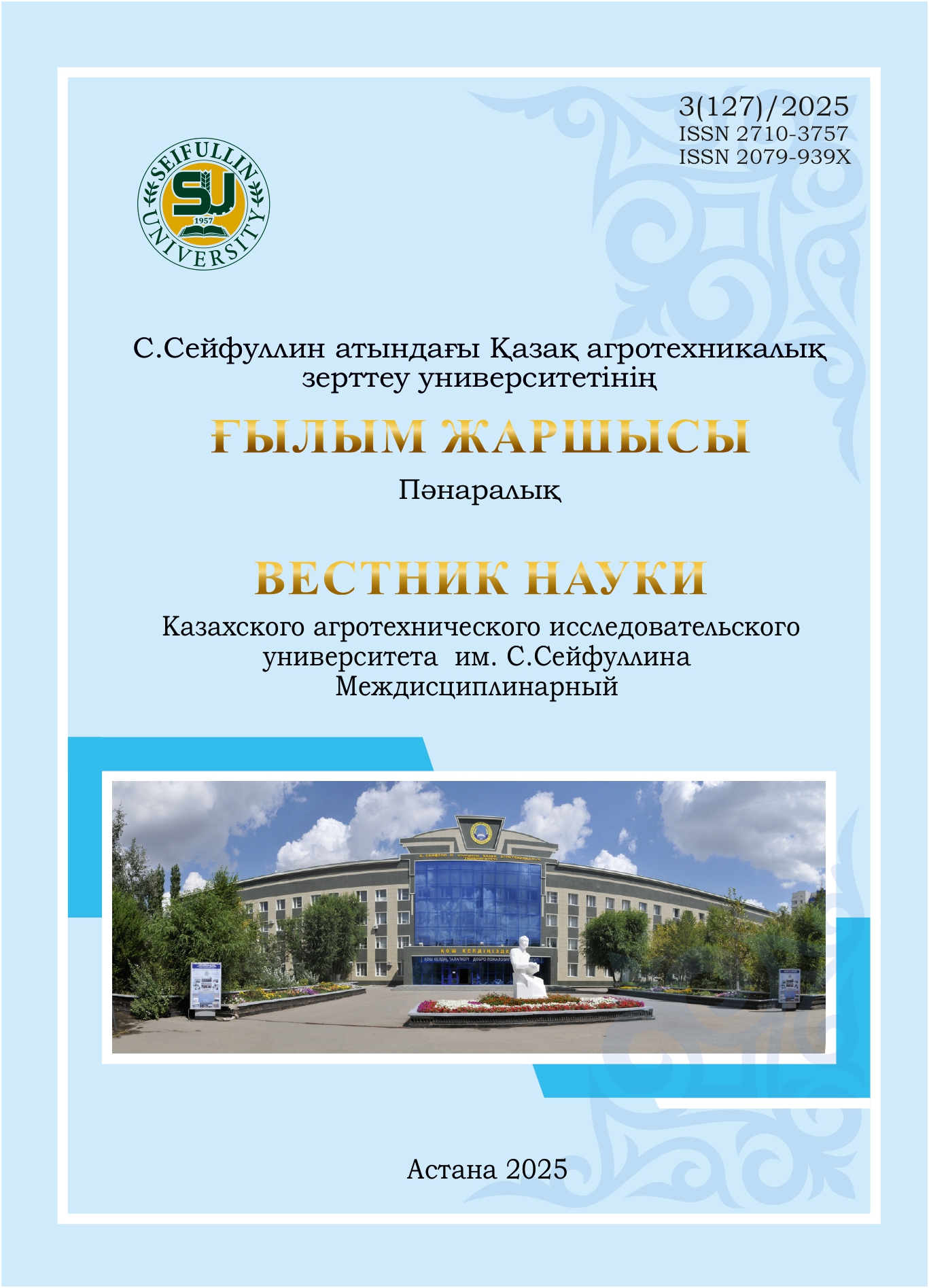Study of variability of indicators of suitability for mechanized harvesting of lentil (Lens Culinaris Medik) samples
DOI:
https://doi.org/10.51452/kazatu.2025.3(127).1991Keywords:
lentils; height to first pod (HFP); plant height; yield; correlation.Abstract
Background and Aim. Lentil is one of the promising crops in agricultural production of Kazakhstan. Continuous assessment of the variability of the main economically valuable traits of plants over a long period of time is one of the stages of work in selection. The aim of the research was to study and select lentil genotypes characterized by a high value of the main traits of suitability for mechanized harvesting (height of plants, height of attachment of the lower bean and productivity).
Materials and Methods.The article presents the data of the study of the most important parameters of suitability for mechanized harvesting in collection samples of lentils brought from various landscapegeographical regions (Russia, Kazakhstan and Australia). The experiments were laid out in the conditions of the Karaganda Agricultural Scientific and Technological Station according to the methodology of the State Variety Testing of Agricultural Crops and guidelines for studying the collection of grain legumes (comp. N.I. Korsakov et al., 1975).
Results. As a result of the correlation analysis of the relationship between biometric indicators and yield, as well as biometric indicators between themselves (height), a stable positive relationship was established for both lentil subspecies. In terms of productivity, samples of large seeded lentils were identified with higher productivity and equal to the standard (ILL 485, Sakura, PI 468898, PI 451764, PI 435960, Slavyanka), and of small-seeded lentils, the VIR sample, k-192, was selected, which is closest to the standard variety Krapinka.
Conclusion. Based on the results obtained during the research, samples of large-seeded (plate) and small-seeded lentils were selected, distinguished by stable values of economically valuable and morphoanatomical indicators of suitability for mechanized harvesting, which are planned to be included in the further stages of the selection process.

